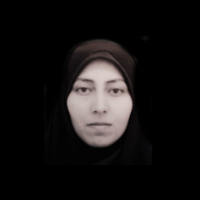Using Stories to Teach Hijab to Elementary School Girls: A Qualitative Evaluative Study
This study aimed at evaluating the effectiveness of reading stories in teaching hijab to elementary school girls.
This evaluative study was conducted with a qualitative approach and a phenomenological method, and the data obtained from semi-structured interviews conducted with 67 female students aged 8 to 11 years in 6 provinces of Iran were analyzed by using the Strauss and Corbin coding method.
The findings during three stages of coding, in terms of 851 concepts, 54 categories, 11 themes, were categorized in four levels, derived from Kirkpatrick’s model of evaluation and the criteria of content desirability, under the titles of reaction (study of attractiveness), learning (usefulness of knowledge), and understanding and readiness for action (practical usefulness). The themes of the first level included ‘expressing interest in the characters of the story̕, ‘expressing satisfaction with the performance of the characters in the story̕ and ‘expressing interest in the story book̕. In the second level, the two themes of ‘learning hijab and the consequences of observing and not observing hijab’ and ‘learning other good behaviors’ brought about the occurrence of learning. The third level showed the audiences̕ understanding of the content of the story, and the themes of ‘understanding the reasons for Laleh’s anger and her reluctance to wear the hijab̕, ‘understanding the wrongness of Laleh’s behavior and making a better decision instead of her̕ , and ‘understanding the reasons for the final acceptance of the hijab by Laleh̕ were categorized at this level. Finally, the three themes of ‘tendency to persuade Laleh to observe hijab’, ‘participation in changing and going on the story to expand hijab̕, and ‘tendency to introduce the story book to others’ formed the fourth level.
According to the findings, the use of artistic tools such as books will bring effective and valuable results in transferring religious and moral .
-
An Evaluation of the Quality of Space and Educational Services in the Inclusive Curriculum of Exceptional Education in Iran Based on the Standards of the Model School
Sayed Mohsen Asgharinekah *, Mahmoud Saeedy Rezvani, Sedighe Kazemi, Hamideh Pakmehr, Fatemeh Alidoosti, Mahsa Khorsandi, Zahar Torbati Faiazy
Journal of Curriculum Research, -
Analyzing the Lived Experiences of Chastity Teachers: Promoters and Inhibitors
*,
Journal of Islamic Perspective on Educational Science, -
Incentives and barriers for observing hijab from the point of view of elementary school girls
mahmood saeedy rezvani, fatemeh gholami
The Women and Families Cultural-Educational Journal,




